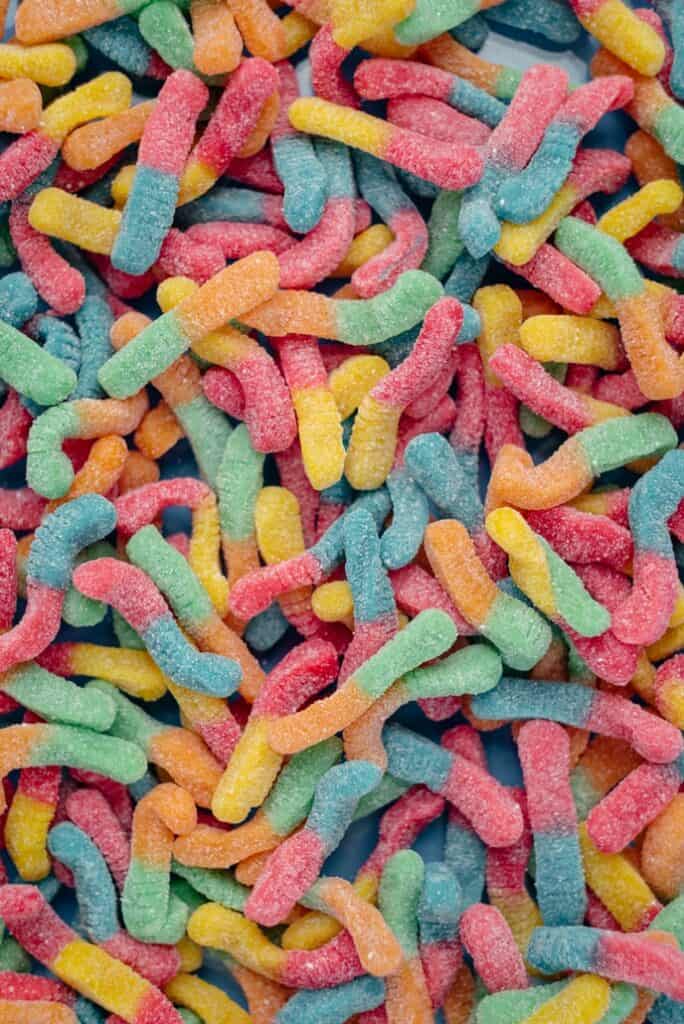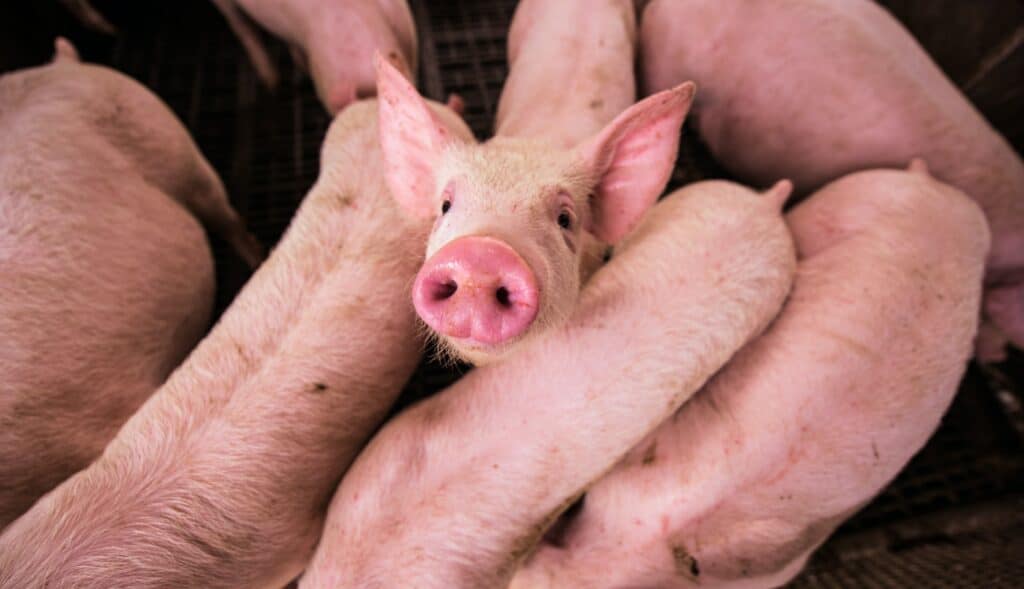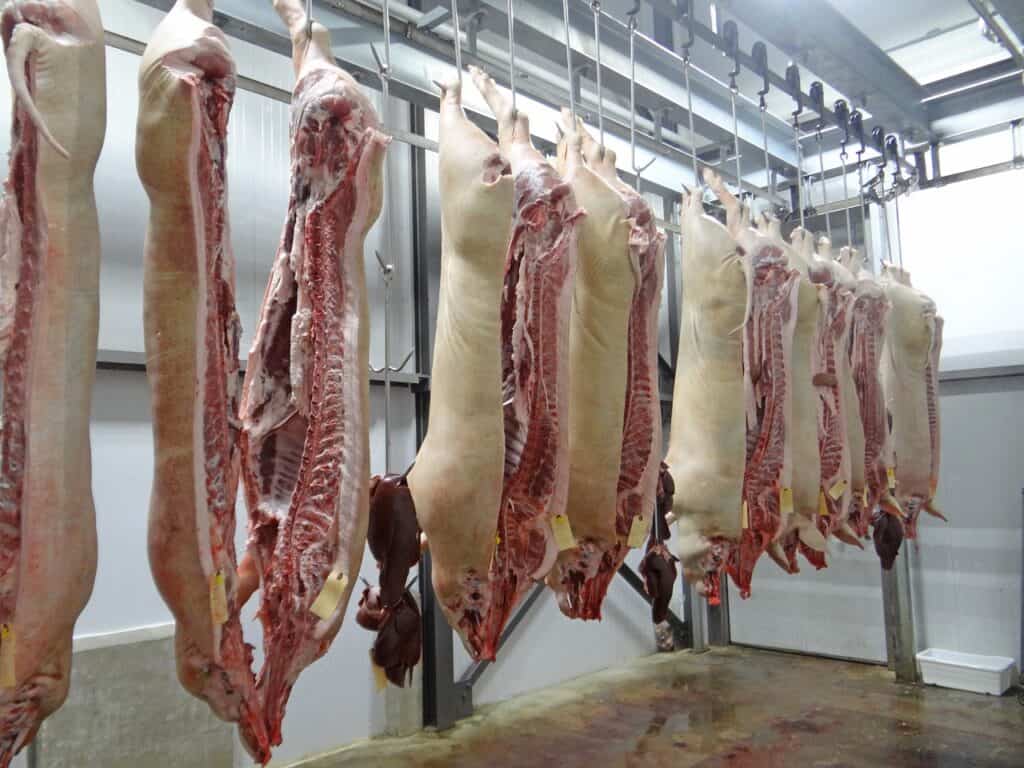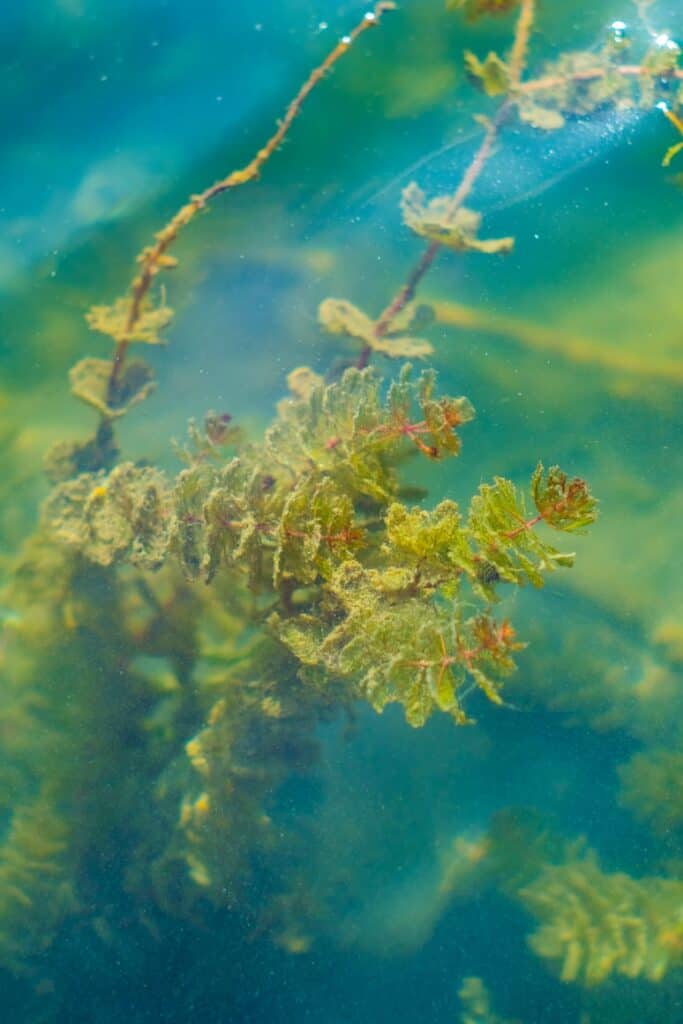[ad_1]
Is gelatine vegan? Gelatine is a protein made from collagen inside animals’ skin and bones. It’s considered a co-product of the meat industry and therefore isn’t vegan, or even vegetarian for that matter.
That’s the quick answer.
But if you want to know precisely how gelatine is made, the products that commonly use gelatine, the size of the industry and vegan-friendly alternatives, then read on to learn more.
What is gelatine?
Gelatine (also spelt gelatin) is a colourless, odourless, and nearly tasteless protein made from animals’ bones, skin, and connective tissues. It’s used as a thickening agent in food and a stabiliser in pharmaceuticals and cosmetics.
Specifically, you’ll find gelatine in products like:
- Gummy bears
- Chocolate
- Jello (or jelly as we say in Australia)
- Gravy
- Ice cream
- Dairy products like yogurt and cheese
- Coffee Creamers
- Yogurt
- Salad dressing and mayonnaise
- Peanut butter
- Pudding
- Marshmallows
- Mousse
- Cake icing (frosting)
- Toothpaste
- Pill capsules
- Jams
- Photographic film
- And more


The global gelatine industry is a massive one. According to Grandview Research, the gelatine market was USD 3.2 billion in 2020 and is expected to reach an annual global turnover of USD 6.7 billion.
This high value is due to the many applications for gelatine, from food production to pharmaceuticals and cosmetics. Its versatility and relatively low price make it a popular choice for manufacturers worldwide.
How is gelatine made?
Gelatine is a combination of the amino acids glycine and proline. Over several hours it’s created by boiling animal parts, including skin, bones, tendons, and cartilage. The collagen is then extracted from these boiled down animal parts.
Once it’s all dissolved, the liquid is strained and cooled to form gelatine in the form of noodles, cubes or sheets.
There are generally 2 types of gelatine:
- Type A, made with pigskin, pork or calf bones
- Type B, made from cattle hides.
However, any animal with a lot of connective tissue can be used. This includes horses, chickens, and fish. In fact, some types of seaweed also contain gelatine (more on that later).


Product labels sometimes state the gelatine source, e.g. Gelatine (Beef Origin).
Are animals slaughtered specifically to make gelatine?
As we know, gelatine is a protein substance derived from collagen found in animal body parts.
Collagen is the most abundant protein in an animal’s body, which makes up about 30% of its total protein.
Animals that die in an abattoir are slaughtered for meat consumption, so there’s no waste for gelatine production.
Meat scraps leftover from processing get used for animal feed, so there’s an argument to be made that there’s no need to slaughter animals specifically for gelatine.
Gelatine production perhaps started as a by-product of the meat industry, but with annual turnovers in the billions of dollars, I’d argue that gelatine is now a co-product of meat and dairy farming — similar to the animal leather industry.
Corporations like Nitta Gelatin Inc., GELITA AG, and Darling Ingredients Inc. depend on mass-scale animal slaughter to supply collagen protein for gelatine production. It’s built into their financial forecasts, and a lack of supply would become a big problem in board rooms.
By purchasing products made with animal gelatine, we’re validating the slice of the financial pie chart in the meat industry and perpetuating more animal death and suffering as a result.


But by avoiding such products, where does that leave us? Does it mean you’ll never enjoy fire-roasted marshmallows ever again?
Fortunately, there’s a rapidly growing selection of cruelty-free gelatine-derived products on the market.
What are the vegan alternatives to gelatine?
In the past few years, vegan alternatives have been created to mimic the effects of collagen without using animals. These include agar-agar and carrageenan for a thicker consistency or pectin or guar gum for a thinner one. There are also vegetable gums in powdered forms, such as xanthan gum and locust bean gum.
Let’s look at each of these gelatine alternatives in a bit more detail, so you know exactly what you’re buying and supporting.
Agar-agar
Agar-agar is a gelatinous material derived from certain red algae species. The algae are dried and then ground into a powder. This powder is then boiled in water, and the agar-agar is extracted. The agar-agar is then dried into flakes, powder or bars and can be used as a gelatine substitute.
Agar-agar has no taste of its own but absorbs the flavours it’s cooked with. Agar-agar contains 80-90% fibre, so it’s great for regulating the digestive system while not supplying any calories to your diet. It also has a high level of iodine, which is beneficial for thyroid health.
Agar-agar is also used in products like toothpaste, shampoo and conditioner. It’s a great natural product with many benefits for your health and beauty.


Carrageenan
Derived from red seaweed, carrageenan is a thickening agent and stabiliser used in many food products. Carrageenan comes as either a powder or liquid and can be used interchangeably with agar-agar, though it’s not quite as strong.
Carrageenan is a very versatile ingredient and can be used in many foods, such as ice cream, to give the product a smooth texture without affecting your meal’s taste or nutritional value. It’s also low in calories, similar to agar-agar but has a slightly salty taste which is why it’s often used in meat products.
As you can see in the example below, carrageenan is used as a stabiliser in the candy, however, gelatine is still used as a thickener.
Carrageenan is also used in products like toothpaste and moisturisers because it’s a natural emulsifier that prevents liquids from separating. This makes it an ideal ingredient for products that need to be stable and consistent.
Pectin
Derived from fruit, pectin is an extract that can be used as a vegan gelatine substitute. Pectin has the same consistency as agar-agar but comes in liquid form rather than powder or flakes. The biggest difference between the two is that agar-agar doesn’t have a taste of its own, while pectin has a slightly sweet and sour flavour.
Pectin is often used in jams, jellies and marmalades to help the products set and hold their shape. It’s also a good source of fibre and helps regulate digestion.
Pectin is found in cosmetics and medicine. And additionally, in paper manufacturing as a sizing agent to prevent ink from soaking into the paper fibres.
Guar Gum
Derived from guar beans, this powder is a common food additive used in many vegan-friendly foods. Guar gum is great for adding volume to baked goods as it can absorb large amounts of liquid without changing the taste or colour of your meal. It’s also high in fibre but only absorbs water when heated, so it’s not ideal for cold dishes.
Guar gum is also found in toothpaste, cosmetics and medicine due to its ability to thicken liquids without affecting the taste. Oh, and it’s used in explosives. The things you learn!
Xanthan Gum
Derived from the fermentation of Xanthomonas campestris, this powder is used as a thickener and stabiliser in many food products.
Xanthan gum is often used in salad dressings, sauces and ice creams to give them a thicker and creamier texture. It doesn’t have a taste of its own but can be combined with other flavours to create different dishes.
Xanthan gum is also used in products like toothpaste and shampoo. It helps to create a stable foam and gives the product a thicker texture.
Locust Bean Gum
Derived from the seeds of the carob tree, locust bean gum is used as an emulsifier and stabiliser in many food products. This powder has no flavour but can be combined with other ingredients to give different dishes a unique taste.
Locust bean gum can be found in toothpaste, lotions and pharmaceuticals.
So, there you have it! Some of the best vegan-friendly gelatine substitutes readily available on the market. With so many options, there’s no excuse not to enjoy all your favourite meals without harming any animals in the process.
Final thoughts on gelatine
So, here is the answer for the question Is Gelatine Vegan or not? It is an animal product found in many food products. Often it’s not listed as the first ingredient, so you may be eating gelatine without even realising it.
The vegan and vegetarian alternatives we’ve shared can help you enjoy your favourite dishes while still being mindful of the environment and animals living on this planet with us.
What have been some struggles that you’ve had when looking for a vegan or veggie substitute to gelatine? Share below!
[ad_2]
Source link
